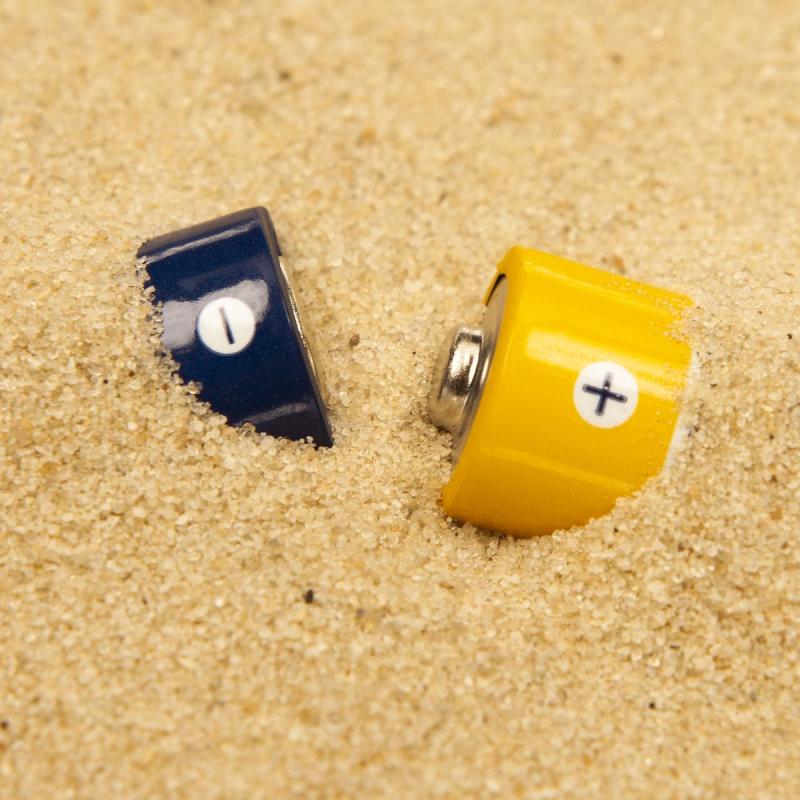Battery tech twofer - A video and a text article


How a Sand Battery Could Revolutionize Home Energy Storage
Iron flow battery promises to take charge

Yesterday I seeded an article about EV battery tech:
A Motor Vehicle Battery Price War Is Kicking Off
I mentioned that there are battery tech articles every week. So of course... there are two this morning.
Ho w a Sand Battery Could Revolutionize Home Energy Storage
Sand. It’s coarse, it's rough, and it can make for a great sand battery. And as weird as that might sound, it’s just one example of the many earthy materials currently used for thermal energy storage (or TES). A while back, we covered the debut of the world’s first commercial sand battery, which is big enough to supply power for about 10,000 people. Now, sand-based energy storage has reached a new frontier: individual homes. Companies like Batsand are currently offering heat batteries that bring hot and fresh sand directly to your door. Seems you can get just about anything delivered these days. But what’s stopped us from experimenting with residential TES before? How will heat storage impact our lives in our homes? And where exactly are homeowners supposed to put this stuff?
Electric transformer station with wind turbines
fhm / Moment / Getty Images Plus
A new battery which is safe, economical and water-based, has been designed to be used for large-scale energy storage.
It promises to be able to support intermittent green energy sources like wind and solar into energy grids.
In a proof-of-concept experiment, researchers at the US Department of Energy’s Pacific Northwest National Laboratory showed their iron-based battery has remarkable cycling stability. The newly designed battery maintained 98.7% of its maximum capacity even after more than 1,000 charging cycles.

The research is published in the journal Nature Communications .
Flow batteries consist of two chambers filled with different liquids. Unlike conventional batteries, flow battery chambers supply liquid constantly circulating through the battery to supply the electrolyte, or energy carrier.
Lead author and battery researcher Gabriel Nambafu
assembles a test flow battery apparatus.
Andrea Starr | Pacific Northwest National Laboratory
Phosphonates like NTMPA dissolve well in water and are non-toxic.
“We were looking for an electrolyte that could bind and store charged iron in a liquid complex at room temperature and mild operating conditions with neutral pH,” says senior author Guosheng Li, a senior scientist at PNNL who leads materials development for rechargeable energy storage devices. “We are motivated to develop battery materials that are Earth-abundant and can be sourced domestically.”
“Our system uses commercially available reagents that haven’t been previously investigated for use in flow batteries,” says co-author Aaron Hollas.
Despite the success, more work needs to be done to increase the energy density of the new battery. It stores 9 watt-hours per litre of liquid. In comparison, vanadium based systems are more than twice as energy dense at 25 Wh/L.
“Our next step is to improve battery performance by focusing on aspects such as voltage output and electrolyte concentration, which will help to increase the energy density,” says Li. “Our voltage output is lower than the typical vanadium flow battery output. We are working on ways to improve that.”
Large-scale storage of power using flow batteries and lithium-ion battery technology are going to be crucial in decarbonisation and the transition to renewable energies.
Evrim Yazgin has a Bachelor of Science majoring in mathematical physics and a Master of Science in physics, both from the University of Melbourne.









I don't know which tech will have the greatest success... but this many candidates is encouraging.
I think the takeaway should be that there are many potential ways to construct batteries and that human nature is such that we will continue to find better ways to store energy.
I think so. The current explosion in battery tech is driven by two things: the need for higher performance in applications like EVs, and the need for cheaper storage of alternative-sourced electricity. These will (probably) have very different technical solutions, so we're seeing this fascinating variety.
I found that side laying (spooning) on my medium firm Nolah Evolution 15 is a great way to store energy.